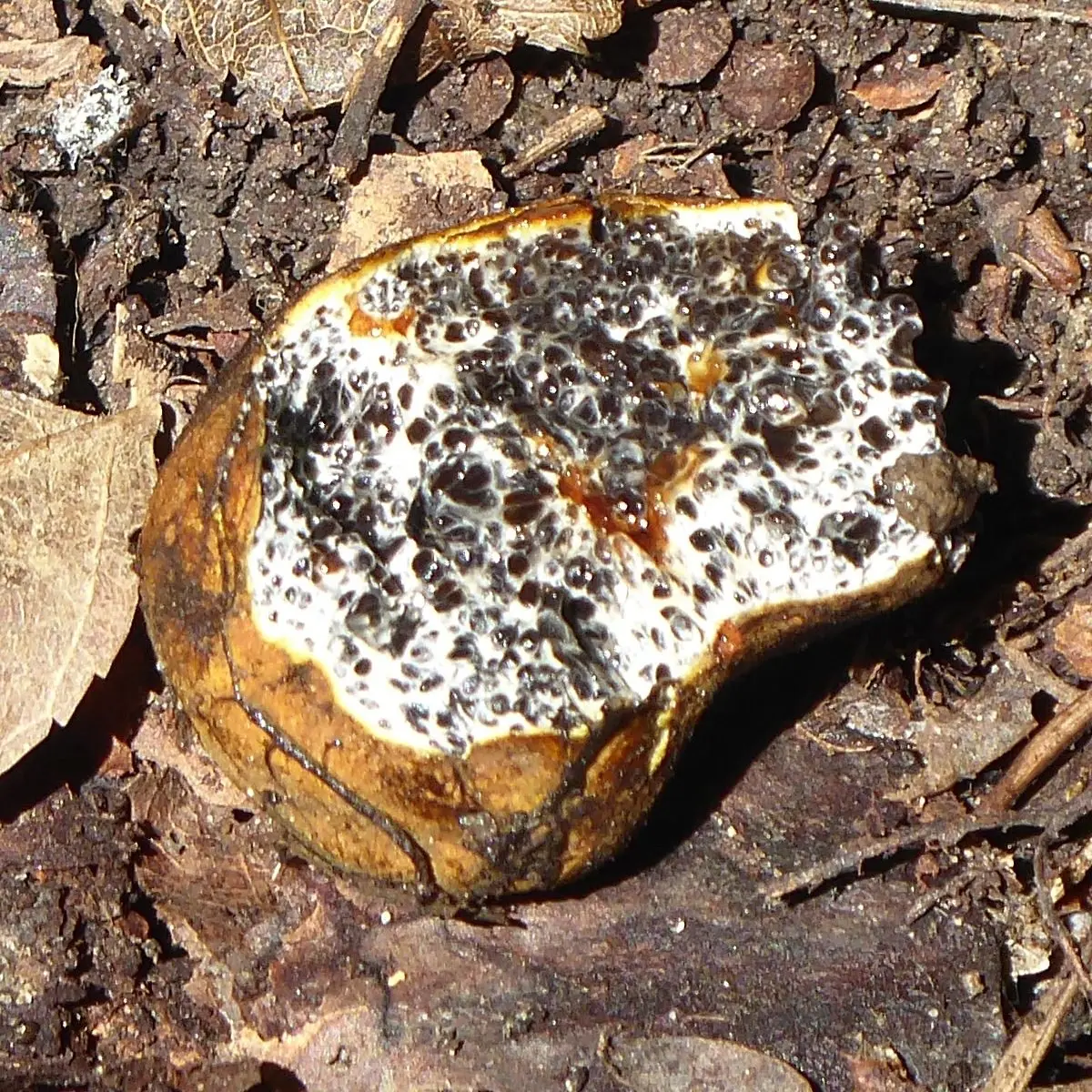Melanogaster doubtful (Melanogaster ambiguus)
- Division: Basidiomycota (Basidiomycetes)
- Subdivision: Agaricomycotina (Agaricomycetes)
- Class: Agaricomycetes (Agaricomycetes)
- Subclass: Agaricomycetidae (Agaricomycetes)
- Order: Boletales (Boletales)
- Family: Paxillaceae (Pig)
- Genus: Melanogaster (Melanogaster)
- Type: Melanogaster ambiguus (Melanogaster doubtful)
:
- Ambiguous Octaviania
- Clay sauce
- Melanogaster klotzschii

The fruiting body is a gasteromycete, that is, it is completely closed until the spores are fully ripe. In such mushrooms, not a hat, a leg, a hymenophore are isolated, but a gasterocarp (fruiting body), peridium (outer shell), gleba (fruiting part).
Gasterocarp 1-3 cm in diameter, rarely up to 4 cm. Shape from spherical to ellipsoid, may be regular or uneven swellings, usually not divided into segments or lobes, with a soft rubbery texture when fresh. Attached by thin, basal, brown, branching cords of mycelium.
Peridium dull, velvety, grayish-brown or cinnamon-brown at first, becoming yellowish-olive with age, with dark brown “bruised” spots, blackish-brown in old age, covered with a small whitish coating. In young specimens, it is smooth, then it cracks, the cracks are deep, and an exposed white trama is visible in them. In section, the peridium is dark, brownish.
Gleba initially white, whitish, whitish-yellowish with bluish-black chambers; chambers up to 1,5 mm in diameter, more or less regularly spaced, larger towards the center and base, not labyrinthoid, empty, gelatinized with mucous contents. With age, when the spores mature, the gleba darkens, becoming reddish-brown, black with whitish streaks.
Smell: in young mushrooms it is perceived as sweetish, fruity, then it becomes unpleasant, resembling rotting onions or rubber. An English-language source (British truffles. A revision of British hypogeous fungi) compares the smell of an adult Melanogaster dubious with the smell of Scleroderma citrinum (common puffball), which, according to descriptions, resembles either the smell of raw potatoes or truffles. And, finally, in ripened specimens, the smell is strong and fetid.
Taste: in young mushrooms spicy, pleasant
spore powder: black, slimy.
Tram plates are white, very rarely pale yellowish, thin, 30-100 µm thick, densely woven, hyaline, thin-walled hyphae, 2-8 µm in diameter, not gelatinized, with clamp connections; few interhypal spaces.
Spores 14-20 x 8-10,5 (-12) µm, initially ovoid and hyaline, soon becoming fusiform or rhomboid, usually with a subacute apex, translucent, with a thickened olive to dark brown wall (1-1,3, XNUMX) µm), smooth.
Basidia 45-55 x 6-9 µm, elongated brown, 2 or 4 (-6) spores, often sclerotized.
Grows on the soil, on the litter, under a layer of fallen leaves, can be significantly immersed in the soil. Recorded in deciduous forests with a predominance of oak and hornbeam. It bears fruit from May to October throughout the temperate zone.
There is no consensus here. Some sources indicate Melanogaster is doubtful as a uniquely inedible species, some believe that the mushroom can be eaten while it is young enough (until the gleba, the inner part, has darkened).
Data on toxicity could not be found.
The author of this note adheres to the principle “if you are not sure – do not try”, therefore we will carefully classify this species as an inedible mushroom.
Photo: Andrey.









